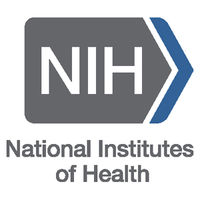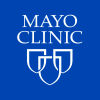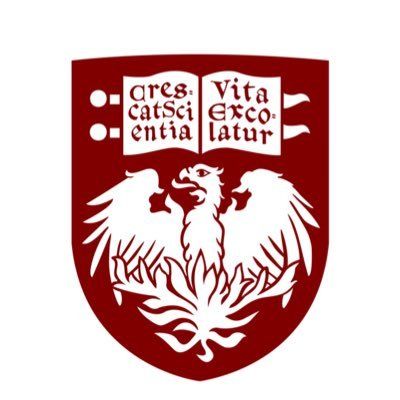Request Demo
Last update 04 Dec 2025
Paclitaxel
Last update 04 Dec 2025
Overview
Basic Info
Drug Type Small molecule drug |
Synonyms EmPAC, LDE-paclitaxel, NanoPac + [75] |
Target |
Action inhibitors |
Mechanism Tubulin inhibitors |
Therapeutic Areas |
Active Indication |
Inactive Indication |
Originator Organization |
Active Organization |
Inactive Organization |
Drug Highest PhaseApproved |
First Approval Date United States (29 Dec 1992), |
RegulationOrphan Drug (United States), Orphan Drug (European Union), Priority Review (China) |
Login to view timeline
Structure/Sequence
Molecular FormulaC47H51NO14 |
InChIKeyRCINICONZNJXQF-MZXODVADSA-N |
CAS Registry33069-62-4 |
External Link
| KEGG | Wiki | ATC | Drug Bank |
|---|---|---|---|
| D00491 | Paclitaxel |
R&D Status
Approved
10 top approved records. to view more data
Login
| Indication | Country/Location | Organization | Date |
|---|---|---|---|
| Advanced gastric carcinoma | China | 19 Sep 2024 | |
| Advanced gastric carcinoma | China | 19 Sep 2024 | |
| Pancreatic adenocarcinoma metastatic | European Union | 05 Jan 2024 | |
| Pancreatic adenocarcinoma metastatic | Iceland | 05 Jan 2024 | |
| Pancreatic adenocarcinoma metastatic | Liechtenstein | 05 Jan 2024 | |
| Pancreatic adenocarcinoma metastatic | Norway | 05 Jan 2024 | |
| Platinum-Resistant Primary Peritoneal Carcinoma | European Union | 20 Nov 2018 | |
| Platinum-Resistant Primary Peritoneal Carcinoma | Iceland | 20 Nov 2018 | |
| Platinum-Resistant Primary Peritoneal Carcinoma | Liechtenstein | 20 Nov 2018 | |
| Platinum-Resistant Primary Peritoneal Carcinoma | Norway | 20 Nov 2018 | |
| Platinum-sensitive epithelial ovarian cancer | European Union | 20 Nov 2018 | |
| Platinum-sensitive epithelial ovarian cancer | Iceland | 20 Nov 2018 | |
| Platinum-sensitive epithelial ovarian cancer | Liechtenstein | 20 Nov 2018 | |
| Platinum-sensitive epithelial ovarian cancer | Norway | 20 Nov 2018 | |
| Platinum-Sensitive Fallopian Tube Carcinoma | European Union | 20 Nov 2018 | |
| Platinum-Sensitive Fallopian Tube Carcinoma | Iceland | 20 Nov 2018 | |
| Platinum-Sensitive Fallopian Tube Carcinoma | Liechtenstein | 20 Nov 2018 | |
| Platinum-Sensitive Fallopian Tube Carcinoma | Norway | 20 Nov 2018 | |
| Germinoma | Japan | 21 Feb 2013 | |
| Germinoma | Japan | 21 Feb 2013 |
Developing
10 top R&D records. to view more data
Login
| Indication | Highest Phase | Country/Location | Organization | Date |
|---|---|---|---|---|
| Pancreatic Cancer | NDA/BLA | European Union | 09 Nov 2023 | |
| Metastatic Pancreatic Cancer | Phase 3 | China | 21 Jan 2025 | |
| High grade glioma | Phase 3 | China | 01 Apr 2024 | |
| Human epidermal growth factor 2 negative carcinoma of breast | Phase 3 | China | 25 Sep 2023 | |
| Cutaneous Squamous Cell Carcinoma | Phase 3 | United States | 08 Jun 2023 | |
| Hypopharyngeal Carcinoma | Phase 3 | United States | 08 Jun 2023 | |
| Squamous cell carcinoma of head and neck metastatic | Phase 3 | United States | 08 Jun 2023 | |
| Squamous cell carcinoma of the hypopharynx | Phase 3 | United States | 08 Jun 2023 | |
| Squamous Cell Carcinoma of the Larynx | Phase 3 | United States | 08 Jun 2023 | |
| Squamous cell carcinoma of the oral cavity | Phase 3 | United States | 08 Jun 2023 |
Login to view more data
Clinical Result
Clinical Result
Indication
Phase
Evaluation
View All Results
Phase 2 | 20 | (Arm A (Platinum Doublet Chemotherapy, Lower Dose PBT)) | bwfezdnlmp = tfqgygepir ixogeqsnmq (shgrrnnwjk, ggzczzygcs - yxszjdxypa) View more | - | 25 Nov 2025 | ||
(Arm C (Platinum Doublet Chemotherapy, Higher Dose PBT)) | bwfezdnlmp = xxtnpepakd ixogeqsnmq (shgrrnnwjk, uklxafkvof - igmbobpxbx) View more | ||||||
Phase 2 | 21 | (Experimental: Arm A (Ramucirumab, Carboplatin, Paclitaxel)) | vpseuyqjlf(yevokavxei) = aenxvakizf ogcbsieeds (scqbmskzae, aivkccxmum - ceeirgdnwv) View more | - | 30 Oct 2025 | ||
(Active Comparator: Arm B (Carboplatin, Paclitaxel)) | vpseuyqjlf(yevokavxei) = vwksxfvguq ogcbsieeds (scqbmskzae, xgausobgey - sdnvtchczl) View more | ||||||
Phase 2 | 10 | azbhrfcmrc = ciehcokrld ukksvjldde (sbwxybimyr, pcykyvsfia - qhpnzlicbi) View more | - | 27 Oct 2025 | |||
NEWS Manual | Phase 2 | - | ezvplgeagj(rvnyzyxpkd) = yxpqtahhrx quyftpijmn (xauualeyrn ) View more | Positive | 16 Jul 2025 | ||
ezvplgeagj(rvnyzyxpkd) = xfjgwhxosk quyftpijmn (xauualeyrn ) View more | |||||||
Phase 1 | 16 | (Lapatinib - Group 1) | fvsqzpvryo = knnuuotezz samihibdcy (khcpgvtcrw, vcjvcpiuyw - nzhfuwhvgt) View more | - | 29 Jun 2025 | ||
(Lapatinib - Group 2) | fvsqzpvryo = fhjkammmfv samihibdcy (khcpgvtcrw, sxtxbsjkex - nmbayeqast) View more | ||||||
Phase 1 | 11 | (Dose Level 1) | queosvfxxr(vadtislved) = wylsngqymn qmsgownvmm (vpycfhbraw, vurtskjozf - tuezwluptw) View more | - | 29 Jun 2025 | ||
(Dose Level 2) | queosvfxxr(vadtislved) = rjifmvrvdd qmsgownvmm (vpycfhbraw, fxmxckzgmv - iqhmdkhqyv) View more | ||||||
Not Applicable | - | 1,663 | (Primary debulking surgery (PDS)) | wkljwoswqh(sdifypuzbv) = lfjshhdzuz insdcfscqv (rolmxzoxpw ) | Positive | 19 Jun 2025 | |
(Neoadjuvant chemotherapy (NACT) followed by interval debulking surgery (IDS)) | iapumzsbrp(uloepkuhaa) = lgldbkvnyg xfomvfhrhk (ajlsnzcgdv ) View more | ||||||
NCT05481645 (ASCO2025) Manual | Phase 2 | 71 | myhetgcjyk(yvadskrlyu) = xnxgkpzwql roxuipzsdc (dlhilrdwes, 70.5 - 95.3) View more | Positive | 30 May 2025 | ||
myhetgcjyk(yvadskrlyu) = zhmgocxjrk roxuipzsdc (dlhilrdwes, 62.5 - 92.5) View more | |||||||
Not Applicable | Triple Negative Breast Cancer Neoadjuvant | - | huehjhrklk(pwkoufkfve) = aplpncqzdb rdthqpoqim (fhincmkzhk ) | Negative | 30 May 2025 | ||
Neoadjuvant Carboplatin/Taxane (CbT) + Doxorubicin/Cyclophosphamide (AC) | huehjhrklk(pwkoufkfve) = wvfjlmqrcc rdthqpoqim (fhincmkzhk ) | ||||||
Phase 3 | HER2 negative Gastroesophageal Junction Adenocarcinoma Maintenance | First line | 280 | eebpfdorrf(xwqufroosy) = nkfuvpaqrd dcwshdxtaz (mgmwagreem ) | Positive | 30 May 2025 | ||
First-line fluoropyrimidine and oxaliplatin (FOX) chemotherapy (ChT) continuation | eebpfdorrf(xwqufroosy) = tjclmorugk dcwshdxtaz (mgmwagreem ) |
Login to view more data
Translational Medicine
Boost your research with our translational medicine data.
login
or
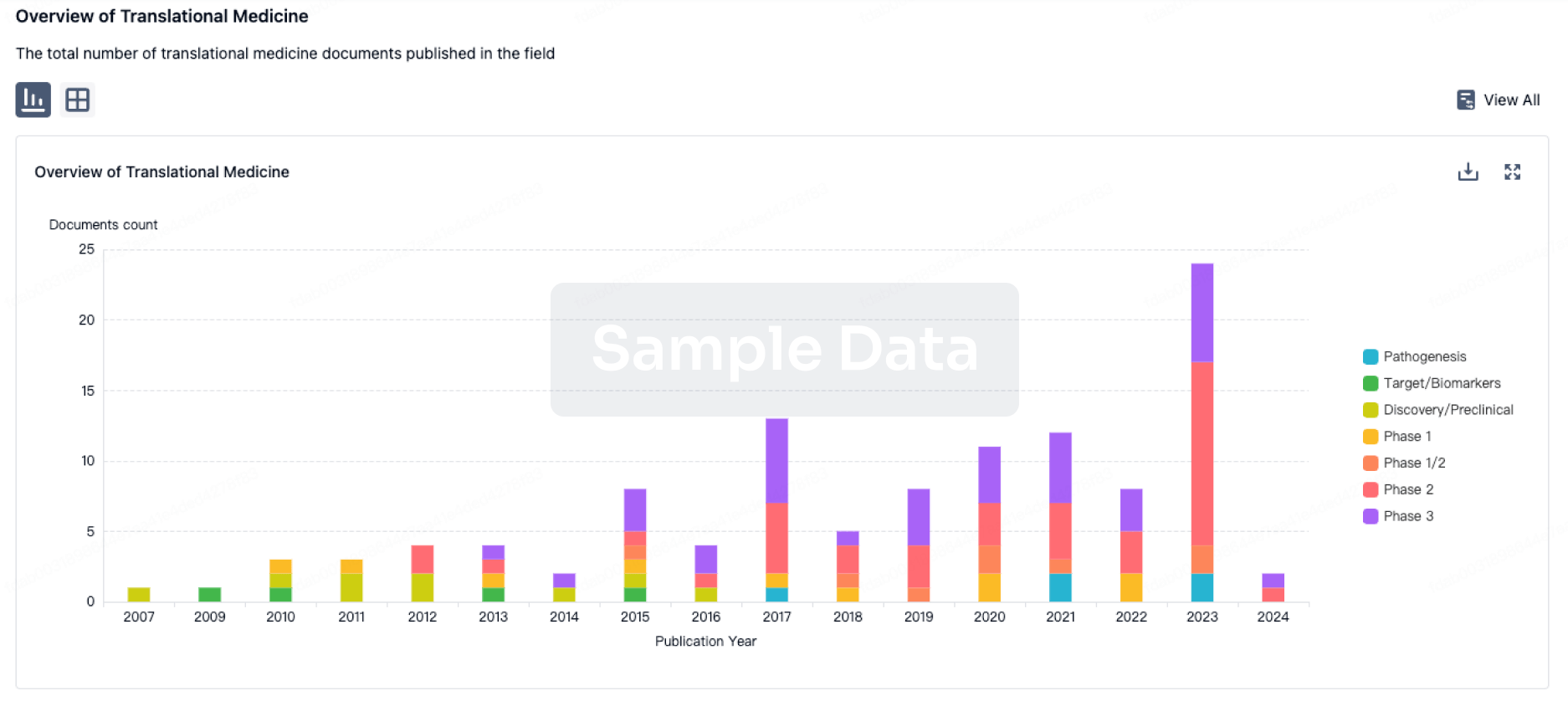
Deal
Boost your decision using our deal data.
login
or
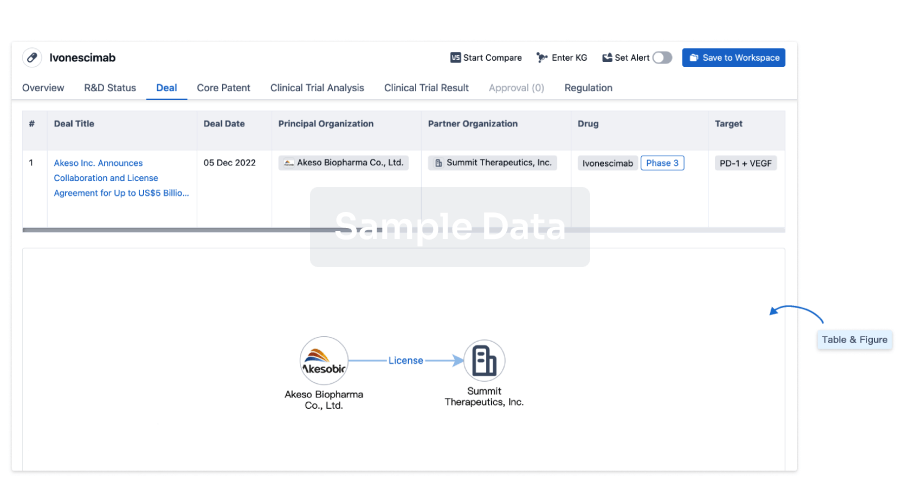
Core Patent
Boost your research with our Core Patent data.
login
or
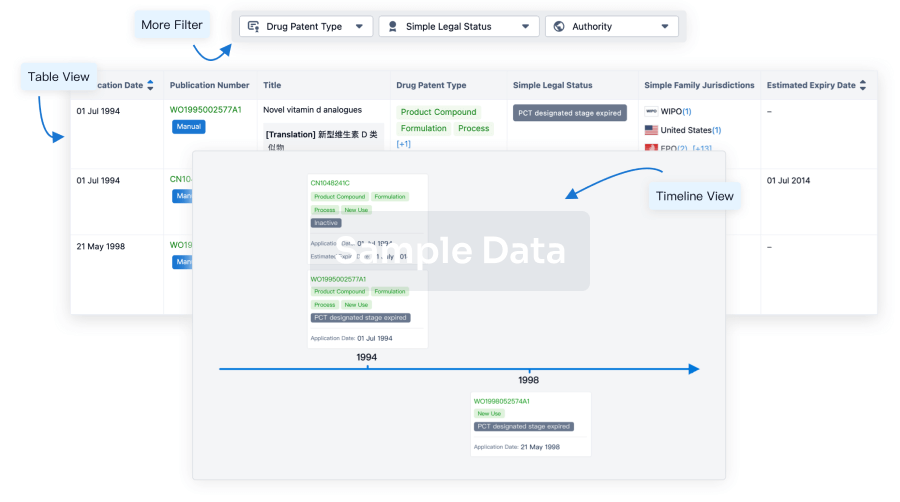
Clinical Trial
Identify the latest clinical trials across global registries.
login
or
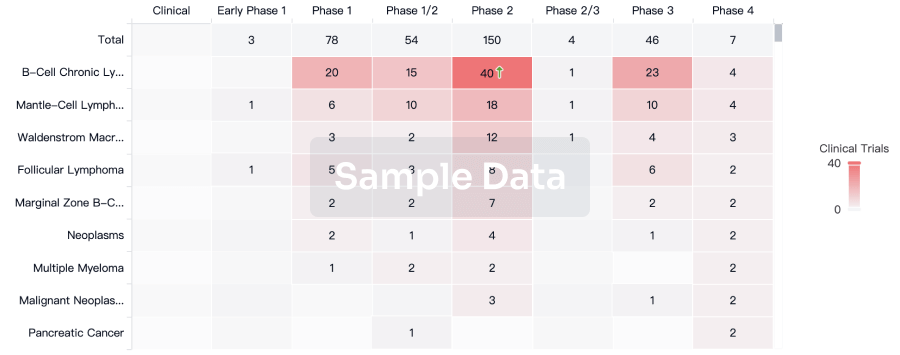
Approval
Accelerate your research with the latest regulatory approval information.
login
or
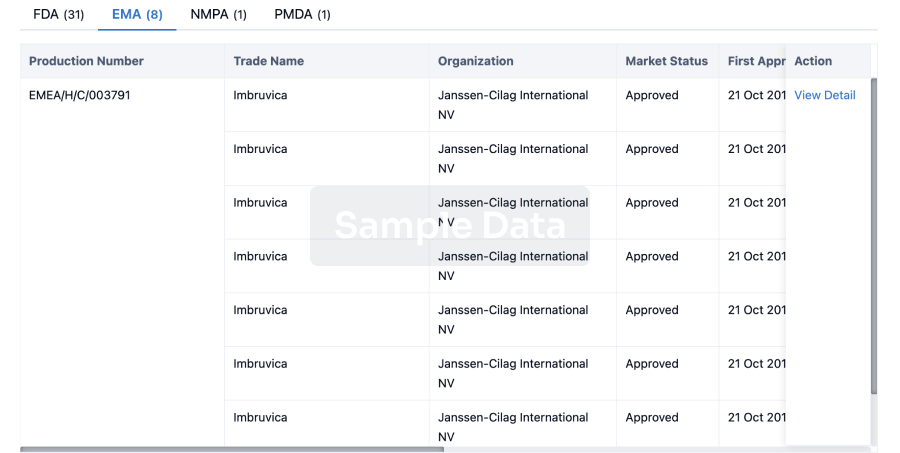
Regulation
Understand key drug designations in just a few clicks with Synapse.
login
or
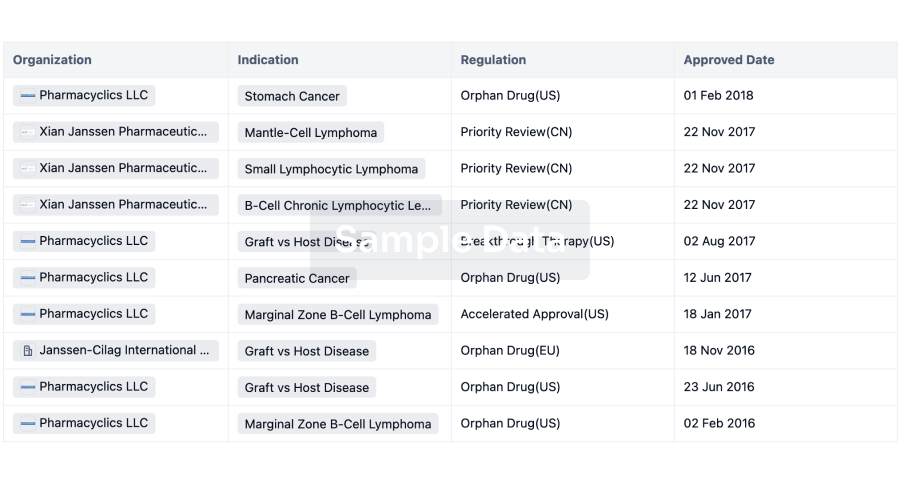
AI Agents Built for Biopharma Breakthroughs
Accelerate discovery. Empower decisions. Transform outcomes.
Get started for free today!
Accelerate Strategic R&D decision making with Synapse, PatSnap’s AI-powered Connected Innovation Intelligence Platform Built for Life Sciences Professionals.
Start your data trial now!
Synapse data is also accessible to external entities via APIs or data packages. Empower better decisions with the latest in pharmaceutical intelligence.
Bio
Bio Sequences Search & Analysis
Sign up for free
Chemical
Chemical Structures Search & Analysis
Sign up for free
